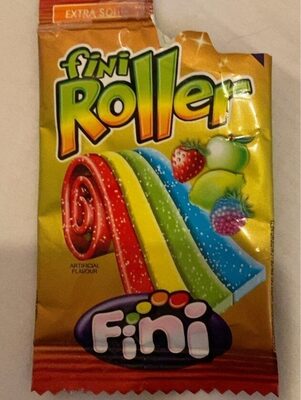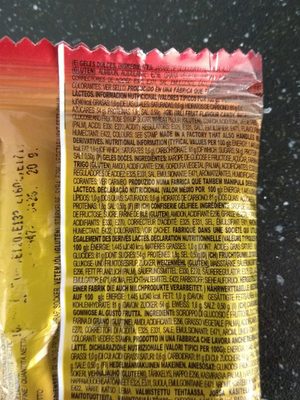Fini roller bonbon
This product page is not complete. You can help to complete it by editing it and adding more data from the photos we have, or by taking more photos using the app for Android or iPhone/iPad. Thank you!
×
Barra-kodea: 8410525159039 (EAN / EAN-13)
Markak: Fini
Kategoriak: en:Snacks, en:Sweet snacks, en:Cocoa and its products, en:Confectioneries, en:Chocolate candies, en:Bonbons, en:Bonbons acidulés gélifiés, en:Bonbons gélifiés, en:Confiseries, en:Snacks sucrés
Matching with your preferences
Ingurumena
Ontziratzea
Transportation
Report a problem
Datuen iturria
Product added on by kiliweb
Last edit of product page on by feat.
Produktuaren orria -gatik editatua charlesnepote, elcoco, halal-app-chakib, inf, musarana, openfoodfacts-contributors, thaialagata, yuka.BI1NG9-7L9QjB8DK1p0Z9QiAOcDhXcRkRCchow, yuka.NppHDcaRMel9AsaMwZo5xWi9BevOKv1FHkQoog, yuka.Nu1pE_2HOu4uMfXO_rsZwAeJFuH8OvZbPXkpog, yuka.P4oTA_SbOuEGG9zc844Q_SK-Nt7tGcYESV0doQ, yuka.ZW9wUkhZUXFyTmtRbFBRbXdqVDEyTkZxNk1YNFFteU5DZEEvSVE9PQ, yuka.sY2b0xO6T85zoF3NwEKvlhRDXPHwmjPpakfjn2y3m9KPEaTnb88r3ondK6g, yuka.sY2b0xO6T85zoF3NwEKvlk0ZC8GPkxXANzDjtE-14o_TNMC0RdR--rb_Iqg, yuka.sY2b0xO6T85zoF3NwEKvllcYYYTQkxv-OyfUl0C52NWfIc25bN9Zs5jTY6s, yuka.sY2b0xO6T85zoF3NwEKvlm1jWvmCuALWaDHvwGOV6-u3dKHWPvUs75b2Lqs, yuka.sY2b0xO6T85zoF3NwEKvlncaCNvTjDfoNC7mlFGTm-3QFI7hbdR-4KX2Ias.











